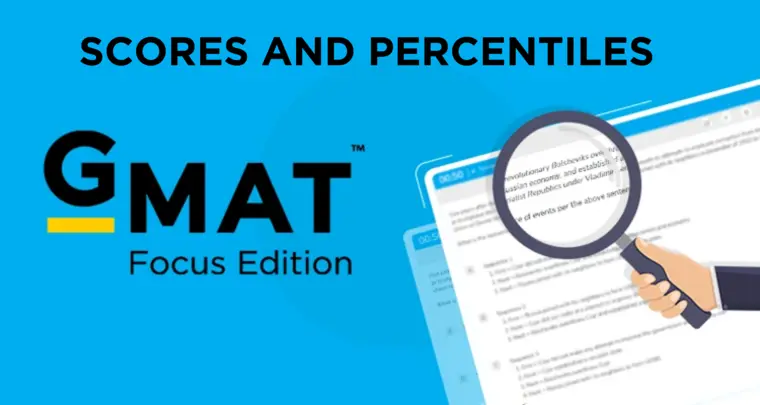Question: If a and b are positive integers such that a – b and a/b are both even integers, which of the following must be an odd integer?
Options:
A. a/2
B. b/2
C. (a+b)/2
D. (a+2)/2
E. (b+2)/2
Solution section:
Solution:
- Translate the problem requirements: We need to understand what it means for both (a – b) and a/b to be even integers, then determine which answer choice expression must always be odd.
- Analyze the constraint that a/b is even: Since a and b are positive integers and their ratio is even, determine what this tells us about the relationship between a and b.
- Analyze the constraint that (a – b) is even: Use the even/odd properties to determine what this constraint adds to our understanding of a and b.
- Combine both constraints to characterize a and b: Synthesize the findings to determine the specific properties that a and b must have.
- Test each answer choice against our constraints: Systematically evaluate which expression must always be odd given our determined properties of a and b.
Execution of Strategic Approach
- Translate the problem requirements. Let’s break down what the problem is telling us in simple terms. We have two positive integers, a and b, and we’re given two conditions: First, “a – b is an even integer” means when we subtract b from a, we get an even number (like 2, 4, 6, 8, etc.). Second, “a/b is an even integer” means when we divide a by b, we get an even number. This is important because it tells us that a must be divisible by b, AND the result of that division is even. Our goal is to figure out which of the five given expressions must ALWAYS be odd, no matter what specific values of a and b we choose (as long as they satisfy our conditions). Process Skill: TRANSLATE – Converting the problem conditions into clear mathematical understanding
- Analyze the constraint that a/b is even Let’s think about what it means for a/b to be an even integer. Since we’re dividing a by b and getting a whole number, this tells us that b divides evenly into a. Let’s call this even result k, so a/b = k where k is even. This means a = b × k. Since k is even, we can write k = 2m for some integer m. So: a = b × 2m = 2mb This tells us that a must be an even multiple of b. In other words, a contains at least one factor of 2 more than b does. For example: If b = 3 and k = 4 (even), then a = 3 × 4 = 12.
- Analyze the constraint that (a – b) is even Now let’s use our second condition. We know that a – b must be even. From our previous step, we found that a = 2mb. So: a – b = 2mb – b = b(2m – 1) For this to be even, we need b(2m – 1) to be even. Now, notice that (2m – 1) is always odd (since 2m is even, and even minus 1 is odd). For the product of b and an odd number to be even, b itself must be even. So we’ve discovered that b must be even!
- Combine both constraints to characterize a and b Let’s put together what we’ve learned: From constraint analysis:
- b must be even
- a = 2mb (where m is a positive integer)
- Since b is even, we can write b = 2n for some integer n Substituting: a = 2m(2n) = 4mn So we have:
- a = 4mn (a is divisible by 4)
- b = 2n (b is even but we don’t know if it’s divisible by 4) Let’s verify with an example: If n = 3 and m = 2, then b = 6 and a = 24. Check: a/b = 24/6 = 4 (even) ✓ Check: a – b = 24 – 6 = 18 (even) ✓ Process Skill: INFER – Drawing the non-obvious conclusion that b must be even
- Test each answer choice against our constraints Now let’s check each answer choice using our findings: a = 4mn and b = 2n. Choice A: a/2 a/2 = 4mn/2 = 2mn Since this equals 2 times an integer, it’s always even. ✗ Choice B: b/2 b/2 = 2n/2 = n This could be odd or even depending on whether n is odd or even. ✗ Choice C: (a+b)/2 (a+b)/2 = (4mn + 2n)/2 = 2n(2m + 1)/2 = n(2m + 1) Since (2m + 1) is odd, this has the same parity as n, so it could be odd or even. ✗ Choice D: (a + 2)/2 (a + 2)/2 = (4mn + 2)/2 = 2(2mn + 1)/2 = 2mn + 1 Since 2mn is even, adding 1 makes this always odd! ✓ Choice E: (b + 2)/2 (b + 2)/2 = (2n + 2)/2 = 2(n + 1)/2 = n + 1 This could be odd or even depending on the value of n. ✗ Process Skill: APPLY CONSTRAINTS – Systematically testing each option against our derived conditions
Final Answer
The answer is D. (a + 2)/2
This expression equals 2mn + 1, which is always odd because:
- 2mn is always even (product of 2 and integers)
- Adding 1 to an even number always gives an odd number
We can verify with our example: a = 24, so (a+2)/2 = 26/2 = 13 (odd) ✓
Common Faltering Points
Errors while devising the approach
- Misunderstanding the constraint “a/b is an even integer” Students often focus only on the fact that a/b is even but miss the critical implication that b must divide a exactly. They might think this just means a and b are both even, without realizing that a must be a specific even multiple of b (a = b × even number).
- Failing to connect both constraints systematically Many students try to work with each constraint (a-b is even, a/b is even) separately without recognizing that combining them reveals the deeper structure: that b must be even and a must be divisible by 4. They might pick random examples that satisfy one constraint but not explore what happens when both must be true simultaneously.
- Planning to test specific numbers instead of deriving general relationships Students often plan to plug in specific values for a and b rather than algebraically determining what forms a and b must take. This approach is less reliable because they might miss edge cases or choose examples that don’t represent all possible valid pairs.
Errors while executing the approach
- Algebraic manipulation errors when substituting a = 2mb When working with a = b × k (where k is even), students frequently make mistakes in the algebraic steps, especially when substituting back into the equation a – b = b(2m – 1). They might incorrectly conclude about the parity of b or make sign errors.
- Incorrect parity analysis Students often struggle with determining whether expressions are odd or even. For example, when evaluating (2m – 1), they might incorrectly conclude it’s even, or when analyzing b(2m – 1), they might not properly apply the rule that odd × even = even while odd × odd = odd.
- Computational errors when testing answer choices When substituting a = 4mn and b = 2n into each answer choice, students frequently make arithmetic mistakes. Common errors include: incorrectly simplifying (a + 2)/2 = (4mn + 2)/2 or not recognizing that 2mn + 1 is always odd.
Errors while selecting the answer
- Choosing an expression that is “sometimes odd” instead of “always odd” The question asks which expression “must be” odd, meaning it’s odd for ALL valid values of a and b. Students might select choices like b/2 or (b+2)/2 because these CAN be odd for certain values, not recognizing that the question requires the expression to be odd in ALL cases.
- Misreading the question requirement Students might solve correctly but then select the choice that must be even instead of odd, or vice versa, especially if they’re rushing or not carefully re-reading what the question is asking for in the final step.
Alternate Solutions
Smart Numbers Approach
Step 1: Understand the constraints We need positive integers a and b where:
- a – b is even
- a/b is even (and since a/b must be an integer, this means b divides a)
Step 2: Choose smart numbers that satisfy both constraints For a/b to be even, we need a = b × (even number). Let’s choose:
- b = 3 (odd number)
- a/b = 4 (even number)
- Therefore: a = 3 × 4 = 12
Step 3: Verify our constraints
- a – b = 12 – 3 = 9… Wait, this is odd! We need a – b to be even.
Step 2 (Revised): Choose better smart numbers Since a – b must be even, a and b must have the same parity (both even or both odd). Since a/b is even and b divides a, let’s try:
- b = 2 (even number)
- a/b = 4 (even number)
- Therefore: a = 2 × 4 = 8
Step 3: Verify our constraints with new numbers
- a – b = 8 – 2 = 6 (even) ✓
- a/b = 8/2 = 4 (even) ✓
Step 4: Test each answer choice with a = 8, b = 2
- a/2 = 8/2 = 4 (even)
- b/2 = 2/2 = 1 (odd)
- (a+b)/2 = (8+2)/2 = 5 (odd)
- (a+2)/2 = (8+2)/2 = 5 (odd)
- (b+2)/2 = (2+2)/2 = 2 (even)
Step 5: Test with another set of smart numbers to confirm Let’s try b = 4, a/b = 6, so a = 24:
- a – b = 24 – 4 = 20 (even) ✓
- a/b = 24/4 = 6 (even) ✓
Testing answer choices with a = 24, b = 4:
- a/2 = 24/2 = 12 (even)
- b/2 = 4/2 = 2 (even)
- (a+b)/2 = (24+4)/2 = 14 (even)
- (a+2)/2 = (24+2)/2 = 13 (odd)
- (b+2)/2 = (4+2)/2 = 3 (odd)
Step 6: Identify the consistent pattern Only choice D gives us an odd result in both test cases, making D the answer that must always be odd.
Answer: D














